Tech
Blockchain Tutorial for Beginners [Updated 2024]

Topics Covered
- What is Blockchain Technology?
- Features of Blockchain?
- Why is Blockchain Important?
- What Is Cryptocurrency?
- What is a Blockchain Wallet?
- What is Ethereum?
- Bitcoin vs Ethereum: Which One is Better?
- What is Ethereum Mining?
- What is a Smart Contract in Blockchain?
- What is Dogecoin?
- Dogecoin vs. Bitcoin
- Dogecoin Mining: Understanding The Fundamentals
- A Look into The Digital Dogecoin Wallet
- 5 Industries That Blockchain Will Disrupt in Future
- Emerging Blockchain Applications Across Industries
- How To Become a Blockchain Developer?
- What is NFT?
- The complete guide on Solidity Programming
- The Future of Shiba Inu Coin
- Understanding the Fundamentals of Ethereum Classic
- What is the Merkle Tree in Blockchain?
- What is Cardano?
- What is Matic Network?
- Top 30 Blockchain Interview Questions and Answers for 2022
- What is Tether?
- A Comprehensive Comparison Of NFT Vs. Crypto
- What Is Web 3.0?
- Types of Blockchain
- What Is DeFi?
- What Is Ripple?
- What Is Binance?
Accelerate Your Full Stack Development Career!
Full Stack Java DeveloperExplore Program
Blockchain Tutorial: Table of Contents
Lesson 1: What Is Blockchain Technology?
Blockchain technology is a new way of handling digital transactions that have started to gain traction in recent years. It works by creating an unalterable record of all the transactions that have ever taken place on a network called a blockchain. This means that no one can tamper with or edit the records without being detected and punished.
Lesson 2: Features Of Blockchain
Blockchain is a new technology that is changing the way we do business. Originally designed as a way to remove the need for a middleman in transactions, it has since been used for a variety of purposes, including but not limited to identity management, supply chain management, and data storage.
Lesson 3: Why Blockchain Is Important?
Blockchain is a distributed digital ledger of all cryptocurrency transactions. This technology has the potential to change the way we do business and could even have far-reaching implications for society as a whole. Here are four reasons why blockchain is so important:
- Blockchain is secure
- Blockchain is transparent
- Blockchain is tamper-proof
- Blockchain enables peer-to-peer transactions without reliance on a central authority or third parties like banks
Lesson 4: What Is Cryptocurrency?
Cryptocurrency is a digital or virtual currency that uses cryptography to encrypt its transactions and regulate the creation of new units. They are often traded on decentralized exchanges and can also be used to purchase goods and services.
Lesson 5: What Is A Blockchain Wallet?
A blockchain wallet is a digital wallet that allows you to store, send, and receive cryptocurrencies like bitcoin and Ethereum. Blockchain wallets are similar to traditional bank accounts in that they allow users to easily transfer funds between their various accounts. But where banks rely on centralized systems to hold customers’ money, blockchain wallets use decentralized technology to manage transactions.
Lesson 6: What Is Ethereum?
Ethereum is a decentralized platform that runs smart contracts: applications that run exactly as programmed without any possibility of fraud or third-party interference. It’s this unique feature that makes Ethereum especially appealing to developers and entrepreneurs, who can use it to build apps on top of it with no risk of censorship or theft.
Learn Through Industry-relevant Projects!
Caltech Blockchain BootcampExplore Program![]()
Lesson 7: Bitcoin vs Ethereum: Which One is Better?
- Bitcoin is a decentralized digital currency that can be sent from user to user on the peer-to-peer bitcoin network without the need for intermediaries. Transactions are verified by network nodes through cryptography and recorded in a public dispersed ledger called a blockchain.
- Ethereum is also a decentralized digital currency, but it goes beyond being just a payment system. It is also a platform that allows developers to build and run decentralized applications (dapps). These dapps can be used to create anything from smart contracts to Decentralized Autonomous Organizations (DAOs).
Lesson 8: What Is Ethereum Mining?
Ethereum Mining is the process of using your computer to help power the Ethereum network and reward participants for their contributions. Every time a user sends a transaction on the Ethereum network, they are rewarded with Ether (ETH). This helps keep the network running and protected from malicious attacks.
Lesson 9: What Is A Smart Contract in Blockchain?
A Smart Contract is a contract that is executed through the use of blockchain technology. This involves a digital ledger of all contracts and transactions, which are tamper-proof and accessible by everyone on the network. Whenever someone tries to modify or delete a contract, their attempt will be recorded in the public ledger as well. This makes it difficult for anyone to falsify records or try to cheat other participants.
Lesson 10: What Is Dogecoin?
Dogecoin is a cryptocurrency that was created as a fun way to make online transactions more accessible. It started as an imitation of Bitcoin, but it has since developed its unique properties and currency system. Dogecoin uses a peer-to-peer network to facilitate transactions. Unlike many other cryptocurrencies, Dogecoin has a very easy-to-use blockchain, making it a popular choice for new cryptocurrency users.
Lesson 11: Dogecoin vs. Bitcoin
Dogecoin and Bitcoin are both types of digital currencies. But what’s the difference between them?
- Bitcoin is more popular than Dogecoin
- Bitcoin offers greater potential for growth than Dogecoin does currently.
- Dogecoin has an active community of supporters who give it extra liquidity and push its prices up during volatile markets.
- Bitcoin is more centralized than Dogecoin – mining pools control about 50% of all hashing power on the network, while Dogecoin relies on users distributed across the web to contribute their computing resources. This creates more stability for Doges overall because individuals cannot corrupt or cheat the system easily as they can with Bitcoin.
Lesson 12: What is Dogecoin Mining?
Dogecoin mining is the process of using a computer to validate and add new transactions to the Dogecoin blockchain. Mining Dogecoin can be a fun way to earn some extra money, and it also helps support the development of the cryptocurrency. Miners are rewarded with Dogecoins for their participation in this process.
Kickstart Your MERN Stack Career With Us!
Full Stack Developer – MERN StackExplore Program![]()
Lesson 13: Digital Dogecoin Wallet
A digital Dogecoin wallet is a great way to store your DOGE. A digital Dogecoin wallet allows you to keep your DOGE safely and securely, without having to worry about losing them or having them stolen.
Lesson 14: 5 Industries That Blockchain Will Disrupt in the Future
There’s no doubt that blockchain technology is changing the world. It has the potential to disrupt a wide range of industries, and we’re going to see more and more examples of this in the future. Here are five industries that we think will be particularly impacted by blockchain shortly:
– Healthcare
– Banking
– Food Safety
– Supply Chain Management
– Gaming
Lesson 15: Emerging Blockchain Applications Across Industries
Blockchain technology has been heavily disrupting the world of finance and other sectors for some time now. But this isn’t the only sector that is benefiting from this innovative technology. Here are some emerging blockchain applications that are having a big impact on industries across the board.
- Healthcare: Blockchain technology can be used to track medical records more accurately and securely than ever before. It can also help decrease fraud by tracking medication prescriptions as they’re administered.
- Retail: Recent studies have shown that shoppers prefer items that have been authenticated using blockchain technology rather than traditional security measures, such as RFID tags or barcodes. This allows retailers to reduce costs associated with inventory management, theft prevention, and customer service issues.
- Logistics & Supply Chain Management
Lesson 16: How To Become a Blockchain Developer?
If you’re interested in developing on the blockchain, then it’s important to know how to become a blockchain developer. There are a few key steps that you need to take to get started:
- Learn about blockchains and cryptocurrencies.
- Understand coding principles and frameworks. This includes things like object-oriented programming (OOP), functional programming techniques, and data structures, such as stacks and queues.
- Get familiar with distributed systems design patterns.
- Incorporate security best practices into your development workflow from the very beginning.
Lesson 17: What is NFT?
Non-fungible tokens (NFTs) are a new kind of digital asset that offers unique benefits over other types of digital assets. Unlike regular cryptocurrencies, which are purely deflationary, NFTs can have a fixed supply and represent ownership of something tangible, such as virtual goods or intellectual property. This allows for more liquid markets and greater flexibility when it comes to exchanging them between users.
Lesson 18: The Complete Guide on Solidity Programming
Solidity is a language for programming smart contracts on the Ethereum blockchain. It is similar to other mainstream languages like Java and JavaScript, but it has been designed specifically for building decentralized applications.
Get Caltech CTME Circle Membership!
Caltech Blockchain BootcampExplore Program![]()
Lesson 19: The Future of Shiba Inu Coin?
Looking to invest in a crypto that has a bright future? Shiba Inu Coin may be the right choice for you! The idea is to create a global currency that is accessible to everyone, and that can be used to purchase goods and services. This innovative crypto is set to take the world of finance by storm in 2022, and there’s no telling how big it will become.
Lesson 20: Understanding the Fundamentals of Ethereum Classic
Ethereum Classic is a platform that runs on blockchain technology. It was created after the Ethereum network was attacked and compromised, resulting in the loss of millions of dollars worth of ERC20 tokens. Ethereum Classic aims to be the original Ethereum platform and offers several features that are unique to it.
Lesson 21: What is the Merkle Tree in Blockchain?
The Merkle Tree is a data structure used in blockchain technology. It helps to ensure the validity of transactions and builds a tamper-proof record of all events that have happened in the system. The tree consists of nodes or blocks, and each block contains a list of transaction hashes as well as other information (such as the time it was created).
Lesson 22: What is Cardano?
Cardano is a new blockchain platform that focuses on smart contracts, scalability, and decentralized applications. Cardano is designed to provide a solution for three major problems faced by current blockchains: high transaction fees, slow processing times, and lack of flexibility. Cardano uses a layered approach that allows it to scale up as needed without sacrificing functionality or decentralization. This allows it to handle high throughputs while still maintaining security guarantees.
Lesson 23: What is Matic Network?
Matic Network is a blockchain-based platform that allows businesses to hire dApps to power their operations. With Matic, companies can access the full range of features and capabilities offered by Ethereum while still keeping their data isolated from the public network.
Lesson 24: Top 30 Blockchain Interview Questions and Answers for 2022
Are you interested in learning more about blockchain? If so, we’ve got the perfect article for you. In this article, we will share with you the top 30 blockchain interview questions and answers for 2022. By knowing what is being asked, you will be able to show your skills and knowledge in the field and land your dream job.
Lesson 25: What is Tether?
Tether is a digital currency that operates on the Bitcoin blockchain. It was created in 2014 and is managed by Tether Limited, a company registered in the British Virgin Islands. Tether is used to purchase items in the real world, and its value is pegged to the value of the US dollar. Tether is backed by real-world assets, so it maintains its value even if the price of Bitcoin or another cryptocurrency falls.
Lesson 26: A Comprehensive Comparison Of NFT Vs. Crypto
Non-fungible tokens (NFTs) and cryptocurrencies are two of the most interesting new trends in blockchain technology.
- An NFT (non-fungible token) is a digital object that can have unique properties, such as ownership rights, scarcity levels, or functions.
- Cryptocurrencies are digital or virtual units that use cryptography to secure their transactions and control the creation of new units.
Lesson 27: What Is Web 3.0?
Web 3.0 is a term used to describe the latest stage of the web development cycle. It refers to a new generation of web applications and services that are built using blockchain technology. At its core, Web 3.0 is about moving away from centralized control and embracing distributed ledgers. This shift will enable a more open and equitable web, where users can trust that their data is safe and their transactions are secure.
Earn a Caltech Badge on Your Resume!
Caltech Blockchain BootcampExplore Program![]()
Lesson 28: Types of Blockchain
There are a few different types of blockchain,
- Distributed ledger technology (DLT), also known as the blockchain, is a distributed database that maintains a continuously growing list of digital transactions. Transactions are spread across many nodes in the network, making it difficult for anyone to tamper with them. This makes it an excellent choice for cases where you need to track records that require transparency and trustworthiness, such as voting or contracts.
- A ConsenSys chain is similar to DLT in that every node keeps a copy of the data. However, unlike DLT, ConsenSys chains do not allow participants to add new entries without consensus from all other nodes in the network. This makes it useful for applications that require high security but low scalability (for example: tracking property rights).
- Smart contracts are code segments that run on Ethereum Virtual Machines and can be used to execute contractual obligations between parties automatically.
Lesson 29: What Is DeFi?
DeFi (distributed finance) is a term that refers to the use of blockchain technology and cryptocurrencies to facilitate financial transactions. DeFi platforms allow users to make direct payments or borrow money using cryptocurrency as collateral. These platforms also provide access to a wide range of financial products, including loans, credit cards, and asset-backed securities.
Lesson 30: What Is Ripple?
Ripple is a cryptocurrency that can also be used to transfer money between different currencies. Ripple works by creating a global network of financial institutions that uses the Ripple ledger to make international payments easier and faster. This network allows banks and other organizations to send money directly to each other without having to go through traditional banking systems.
Lesson 31: What Is Binance?
Binance is a popular cryptocurrency exchange that offers users an easy and user-friendly platform to buy and sell cryptocurrencies. It has rapidly become one of the most popular exchanges in the world, with nearly two million registered users and over $1 billion in traded volume every day. Binance allows users to trade a variety of different digital assets, including Bitcoin, Ethereum, Litecoin, and other altcoins.
Get Mentored by Leading Java Experts!
Full Stack Java DeveloperExplore Program![]()
Fuente
Tech
Harvard Alumni, Tech Moguls, and Best-Selling Authors Drive Nearly $600 Million in Pre-Order Sales
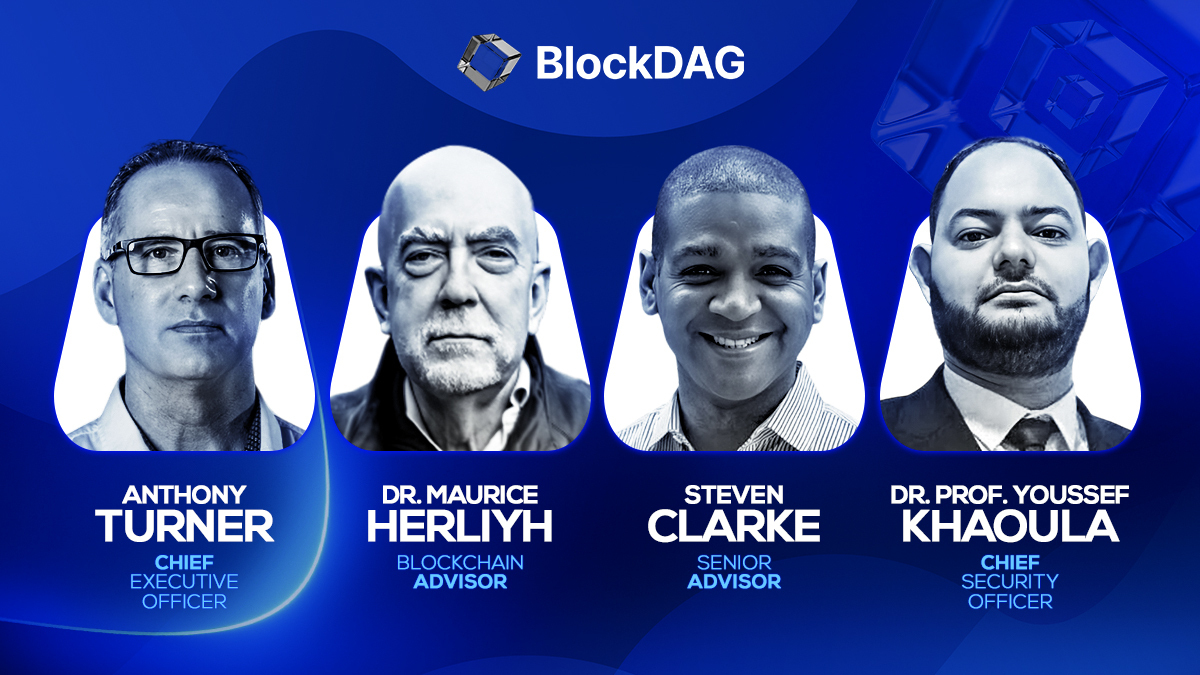
BlockDAG Network’s history is one of innovation, perseverance, and a vision to push the boundaries of blockchain technology. With Harvard alumni, tech moguls, and best-selling authors at the helm, BlockDAG is rewriting the rules of the cryptocurrency game.
CEO Antony Turner, inspired by the successes and shortcomings of Bitcoin and Ethereum, says, “BlockDAG leverages existing technology to push the boundaries of speed, security, and decentralization.” This powerhouse team has led a staggering 1,600% price increase in 20 pre-sale rounds, raising over $63.9 million. The secret? Unparalleled expertise and a bold vision for the future of blockchain.
Let’s dive into BlockDAG’s success story and find out what the future holds for this cryptocurrency.
The Origin: Why BlockDAG Was Created
In a recent interview, BlockDAG CEO Antony Turner perfectly summed up why the market needs BlockDAG’s ongoing revolution. He said:
“The creation of BlockDAG was inspired by Bitcoin and Ethereum, their successes and their shortcomings.
If you look at almost any new technology, it is very rare that the first movers remain at the forefront forever. Later incumbents have a huge advantage in entering a market where the need has been established and the technology is no longer cutting edge.
BlockDAG has done just that: our innovation is incorporating existing technology to provide a better solution, allowing us to push the boundaries of speed, security, and decentralization.”
The Present: How Far Has BlockDAG Come?
BlockDAG’s presale is setting new benchmarks in the cryptocurrency investment landscape. With a stunning 1600% price increase over 20 presale lots, it has already raised over $63.9 million in capital, having sold over 12.43 billion BDAG coins.
This impressive performance underscores the overwhelming confidence of investors in BlockDAG’s vision and leadership. The presale attracted over 20,000 individual investors, with the BlockDAG community growing exponentially by the hour.
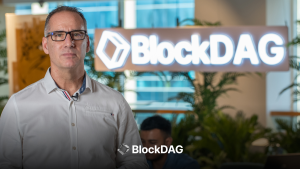
These monumental milestones have been achieved thanks to the unparalleled skills, experience and expertise of BlockDAG’s management team:
Antony Turner – Chief Executive Officer
Antony Turner, CEO of BlockDAG, has over 20 years of experience in the Fintech, EdTech, Travel and Crypto industries. He has held senior roles at SPIRIT Blockchain Capital and co-founded Axona-Analytics and SwissOne. Antony excels in financial modeling, business management and scaling growth companies, with expertise in trading, software, IoT, blockchain and cryptocurrency.
Director of Communications
Youssef Khaoulaj, CSO of BlockDAG, is a Smart Contract Auditor, Metaverse Expert, and Red Team Hacker. He ensures system security and disaster preparedness, and advises senior management on security issues.
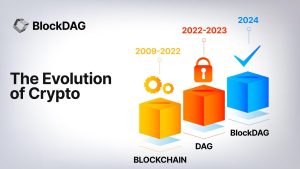
advisory Committee
Steven Clarke-Martin, a technologist and consultant, excels in enterprise technology, startups, and blockchain, with a focus on DAOs and smart contracts. Maurice Herlihy, a Harvard and MIT graduate, is an award-winning computer scientist at Brown University, with experience in distributed computing and consulting roles, most notably at Algorand.
The Future: Becoming the Cryptocurrency with the Highest Market Cap in the World
Given its impressive track record and a team of geniuses working tirelessly behind the scenes, BlockDAG is quickly approaching the $600 million pre-sale milestone. This crypto powerhouse will soon enter the top 30 cryptocurrencies by market cap.
Currently trading at $0.017 per coin, BlockDAG is expected to hit $1 million in the coming months, with the potential to hit $30 per coin by 2030. Early investors have already enjoyed a 1600% ROI by batch 21, fueling a huge amount of excitement around BlockDAG’s presale. The platform is seeing significant whale buying, and demand is so high that batch 21 is almost sold out. The upcoming batch is expected to drive prices even higher.

Invest in BlockDAG Pre-Sale Now:
Pre-sale: https://purchase.blockdag.network
Website: https://blockdag.network
Telegram: https://t.me/blockDAGnetwork
Discord: Italian: https://discord.gg/Q7BxghMVyu
No spam, no lies, just insights. You can unsubscribe at any time.
Tech
How Karak’s Latest Tech Integration Could Make Data Breaches Obsolete

- Space and Time uses zero-knowledge proofs to ensure secure and tamper-proof data processing for smart contracts and enterprises.
- The integration facilitates faster development and deployment of Distributed Secure Services (DSS) on the Karak platform.
Karak, a platform known for its strong security capabilities, is enhancing its Distributed Secure Services (DSS) by integrating Space and Time as a zero-knowledge (ZK) coprocessor. This move is intended to strengthen trustless operations across its network, especially in slashing and rewards mechanisms.
Space and Time is a verifiable processing layer that uses zero-knowledge proofs to ensure that computations on decentralized data warehouses are secure and untampered with. This system enables smart contracts, large language models (LLMs), and enterprises to process data without integrity concerns.
The integration with Karak will enable the platform to use Proof of SQL, a new ZK-proof approach developed by Space and Time, to confirm that SQL query results are accurate and have not been tampered with.
One of the key features of this integration is the enhancement of DSS on Karak. DSS are decentralized services that use re-staked assets to secure the various operations they provide, from simple utilities to complex marketplaces. The addition of Space and Time technology enables faster development and deployment of these services, especially by simplifying slashing logic, which is critical to maintaining security and trust in decentralized networks.
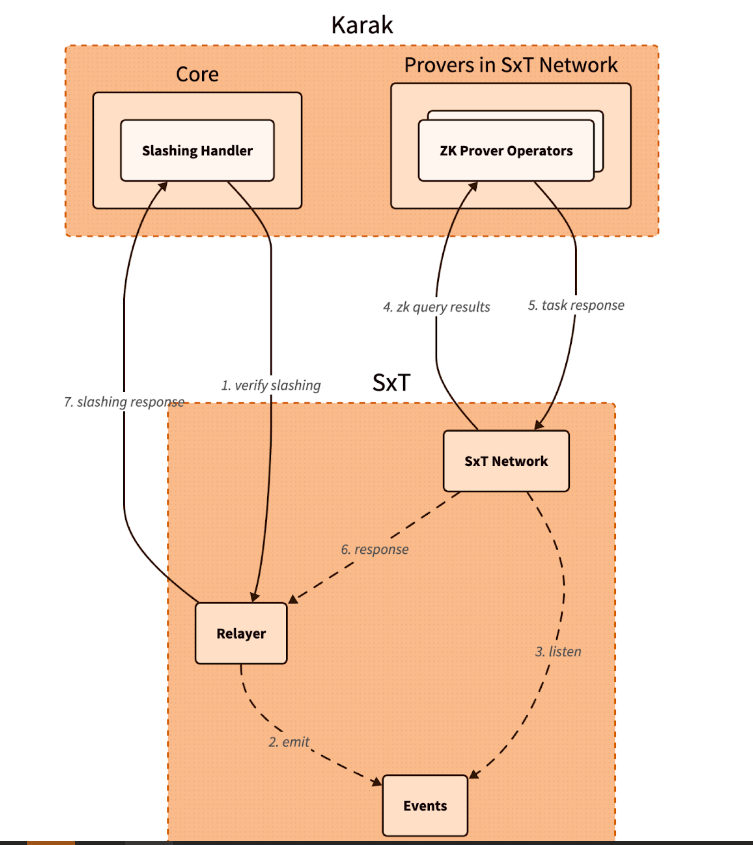
Additionally, Space and Time is developing its own DSS for blockchain data indexing. This service will allow community members to easily participate in the network by running indexing nodes. This is especially beneficial for applications that require high security and decentralization, such as decentralized data indexing.
The integration architecture follows a detailed and secure flow. When a Karak slashing contract needs to verify a SQL query, it calls the Space and Time relayer contract with the required SQL statement. This contract then emits an event with the query details, which is detected by operators in the Space and Time network.
These operators, responsible for indexing and monitoring DSS activities, validate the event and route the work to a verification operator who runs the query and generates the necessary ZK proof.
The result, along with a cryptographic commitment on the queried data, is sent to the relayer contract, which verifies and returns the data to the Karak cutter contract. This end-to-end process ensures that the data used in decision-making, such as determining penalties within the DSS, is accurate and reliable.
Karak’s mission is to provide universal security, but it also extends the capabilities of Space and Time to support multiple DSSs with their data indexing needs. As these technologies evolve, they are set to redefine the secure, decentralized computing landscape, making it more accessible and efficient for developers and enterprises alike. This integration represents a significant step towards a more secure and verifiable digital infrastructure in the blockchain space.
Website | X (Twitter) | Discord | Telegram
No spam, no lies, just insights. You can unsubscribe at any time.
Tech
Cryptocurrency Payments: Should CFOs Consider This Ferrari-Approved Trend?

Iconic Italian luxury carmaker Ferrari has announced the expansion of its cryptocurrency payment system to its European dealer network.
The move, which follows a successful launch in North America less than a year ago, raises a crucial question for CFOs across industries: Is it time to consider accepting cryptocurrency as a form of payment for your business?
Ferrari’s move isn’t an isolated one. It’s part of a broader trend of companies embracing digital assets. As of 2024, we’re seeing a growing number of companies, from tech giants to traditional retailers, accepting cryptocurrencies.
This change is determined by several factors:
- Growing mainstream adoption of cryptocurrencies
- Growing demand from tech-savvy and affluent consumers
- Potential for faster and cheaper international transactions
- Desire to project an innovative brand image
Ferrari’s approach is particularly noteworthy. They have partnered with BitPay, a leading cryptocurrency payment processor, to allow customers to purchase vehicles using Bitcoin, Ethereum, and USDC. This satisfies their tech-savvy and affluent customer base, many of whom have large digital asset holdings.
Navigating Opportunities and Challenges
Ferrari’s adoption of cryptocurrency payments illustrates several key opportunities for companies considering this move. First, it opens the door to new customer segments. By accepting cryptocurrency, Ferrari is targeting a younger, tech-savvy demographic—people who have embraced digital assets and see them as a legitimate form of value exchange. This strategy allows the company to connect with a new generation of affluent customers who may prefer to conduct high-value transactions in cryptocurrency.
Second, cryptocurrency adoption increases global reach. International payments, which can be complex and time-consuming with traditional methods, become significantly easier with cryptocurrency transactions. This can be especially beneficial for businesses that operate in multiple countries or deal with international customers, as it potentially reduces friction in cross-border transactions.
Third, accepting cryptocurrency positions a company as innovative and forward-thinking. In today’s fast-paced business environment, being seen as an early adopter of emerging technologies can significantly boost a brand’s image. Ferrari’s move sends a clear message that they are at the forefront of financial innovation, which can appeal to customers who value cutting-edge approaches.
Finally, there is the potential for cost savings. Traditional payment methods, especially for international transactions, often incur substantial fees. Cryptocurrency transactions, on the other hand, can offer lower transaction costs. For high-value purchases, such as luxury cars, these savings could be significant for both the business and the customer.
While the opportunities are enticing, accepting cryptocurrency payments also presents significant challenges that businesses must address. The most notable of these is volatility. Cryptocurrency values can fluctuate dramatically, sometimes within hours, posing potential risk to businesses that accept them as payment. Ferrari addressed this challenge by implementing a system that instantly converts cryptocurrency received into traditional fiat currencies, effectively mitigating the risk of value fluctuations.
Regulatory uncertainty is another major concern. The legal landscape surrounding cryptocurrencies is still evolving in many jurisdictions around the world. This lack of clear and consistent regulations can create compliance challenges for companies, especially those operating internationally. Companies must remain vigilant and adaptable as new laws and regulations emerge, which can be a resource-intensive process.
Implementation costs are also a significant obstacle. Integrating cryptocurrency payment systems often requires substantial investment in new technology infrastructure and extensive staff training. This can be especially challenging for small businesses or those with limited IT resources. The costs are not just financial; a significant investment of time is also required to ensure smooth implementation and operation.
Finally, security concerns loom large in the world of cryptocurrency transactions. While blockchain technology offers some security benefits, cryptocurrency transactions still require robust cybersecurity measures to protect against fraud, hacks, and other malicious activity. Businesses must invest in robust security protocols and stay up-to-date on the latest threats and protections, adding another layer of complexity and potential costs to accepting cryptocurrency payments.
Strategic Considerations for CFOs
If you’re thinking of following in Ferrari’s footsteps, here are the key factors to consider:
- Risk Assessment: Carefully evaluate potential risks to your business, including financial, regulatory, and reputational risks.
- Market Analysis: Evaluate whether your customer base is significantly interested in using cryptocurrencies for payments.
- Technology Infrastructure: Determine the costs and complexities of implementing a cryptographic payment system that integrates with existing financial processes.
- Regulatory Compliance: Ensure that cryptocurrency acceptance is in line with local regulations in all markets you operate in. Ferrari’s gradual rollout demonstrates the importance of this consideration.
- Financial Impact: Analyze how accepting cryptocurrency could impact your cash flow, accounting practices, and financial reporting.
- Partnership Evaluation: Consider partnering with established crypto payment processors to reduce risk and simplify implementation.
- Employee Training: Plan comprehensive training to ensure your team is equipped to handle cryptocurrency transactions and answer customer questions.
While Ferrari’s adoption of cryptocurrency payments is exciting, it’s important to consider this trend carefully.
A CFO’s decision to adopt cryptocurrency as a means of payment should be based on a thorough analysis of your company’s specific needs, risk tolerance, and strategic goals. Cryptocurrency payments may not be right for every business, but for some, they could provide a competitive advantage in an increasingly digital marketplace.
Remember that the landscape is rapidly evolving. Stay informed about regulatory changes, technological advancements, and changing consumer preferences. Whether you decide to accelerate your crypto engines now or wait in the pit, keeping this payment option on your radar is critical to navigating the future of business transactions.
Was this article helpful?
Yes No
Sign up to receive your daily business insights
Tech
Bitcoin Tumbles as Crypto Market Selloff Mirrors Tech Stocks’ Plunge
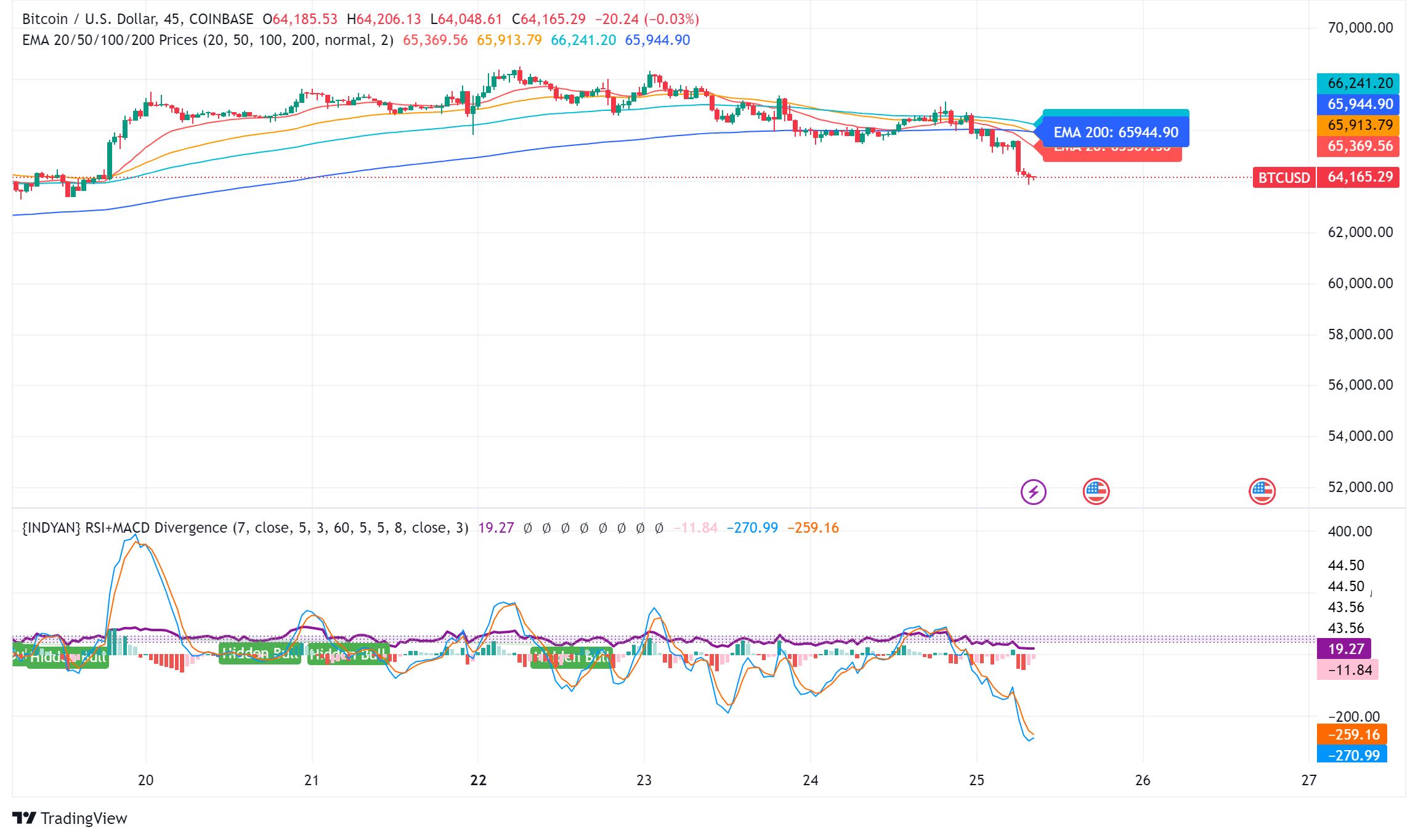
The world’s largest cryptocurrency, Bitcoin (BTC), suffered a significant price decline on Wednesday, falling below $65,000. The decline coincides with a broader market sell-off that has hit technology stocks hard.
Cryptocurrency Liquidations Hit Hard
CoinGlass data reveals a surge in long liquidations in the cryptocurrency market over the past 24 hours. These liquidations, totaling $220.7 million, represent forced selling of positions that had bet on price increases. Bitcoin itself accounted for $14.8 million in long liquidations.
Ethereum leads the decline
Ethereal (ETH), the second-largest cryptocurrency, has seen a steeper decline than Bitcoin, falling nearly 8% to trade around $3,177. This decline mirrors Bitcoin’s price action, suggesting a broader market correction.
Cryptocurrency market crash mirrors tech sector crash
The cryptocurrency market decline appears to be linked to the significant losses seen in the U.S. stock market on Wednesday. Stock market listing The index, heavily weighted toward technology stocks, posted its sharpest decline since October 2022, falling 3.65%.
Analysts cite multiple factors
Several factors may have contributed to the cryptocurrency market crash:
- Tech earnings are underwhelming: Earnings reports from tech giants like Alphabet are disappointing (Google(the parent company of), on Tuesday, triggered a sell-off in technology stocks with higher-than-expected capital expenditures that could have repercussions on the cryptocurrency market.
- Changing Political Landscape: The potential impact of the upcoming US elections and changes in Washington’s policy stance towards cryptocurrencies could influence investor sentiment.
- Ethereal ETF Hopes on the line: While bullish sentiment around a potential U.S. Ethereum ETF initially boosted the market, delays or rejections could dampen enthusiasm.
Analysts’ opinions differ
Despite the short-term losses, some analysts remain optimistic about Bitcoin’s long-term prospects. Singapore-based cryptocurrency trading firm QCP Capital believes Bitcoin could follow a similar trajectory to its post-ETF launch all-time high, with Ethereum potentially converging with its previous highs on sustained institutional interest.
Rich Dad Poor Dad Author’s Prediction
Robert Kiyosaki, author of the best-selling Rich Dad Poor Dad, predicts a potential surge in the price of Bitcoin if Donald Trump is re-elected as US president. He predicts a surge to $105,000 per coin by August 2025, fueled by a weaker dollar that is set to boost US exports.
BTC/USD Technical Outlook
Bitcoin price is currently trading below key support levels, including the $65,500 level and the 100 hourly moving average. A break below the $64,000 level could lead to further declines towards the $63,200 support zone. However, a recovery above the $65,500 level could trigger another increase in the coming sessions.
-

 News11 months ago
News11 months agoVolta Finance Limited – Director/PDMR Shareholding
-

 News11 months ago
News11 months agoModiv Industrial to release Q2 2024 financial results on August 6
-
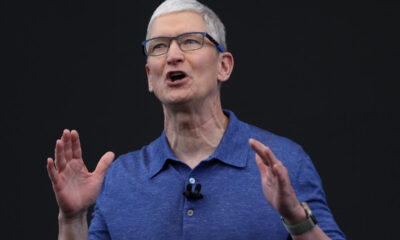
 News11 months ago
News11 months agoApple to report third-quarter earnings as Wall Street eyes China sales
-

 News11 months ago
News11 months agoNumber of Americans filing for unemployment benefits hits highest level in a year
-
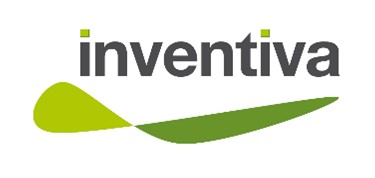
 News1 year ago
News1 year agoInventiva reports 2024 First Quarter Financial Information¹ and provides a corporate update
-

 News1 year ago
News1 year agoLeeds hospitals trust says finances are “critical” amid £110m deficit
-
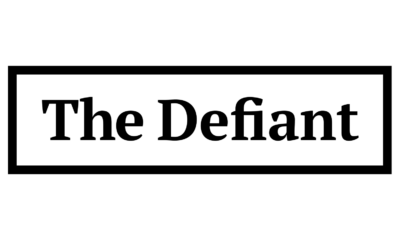
 DeFi1 year ago
DeFi1 year ago🏴☠️ Pump.Fun operated by Insider Exploit
-

 Markets1 year ago
Markets1 year agoWhale Investments in Bitcoin Hit $100 Billion in 2024, Fueling Insane Investor Optimism ⋆ ZyCrypto
-

 Tech1 year ago
Tech1 year agoBitcoin’s Correlation With Tech Stocks Is At Its Highest Since August 2023: Bloomberg ⋆ ZyCrypto
-

 Tech1 year ago
Tech1 year agoEverything you need to know
-

 News11 months ago
News11 months agoStocks wobble as Fed delivers and Meta bounces
-

 Markets1 year ago
Markets1 year agoCrazy $3 Trillion XRP Market Cap Course Charted as Ripple CEO Calls XRP ETF “Inevitable” ⋆ ZyCrypto





